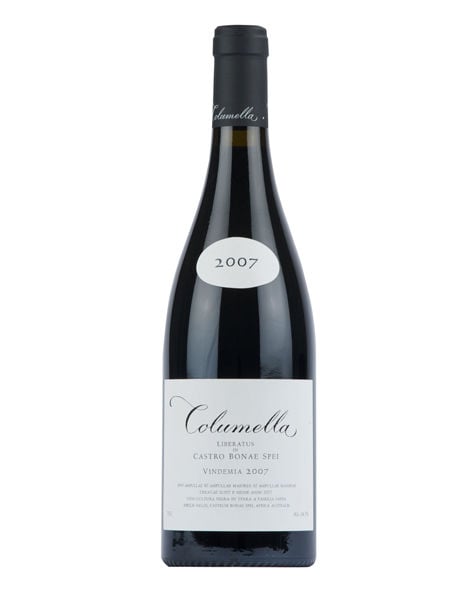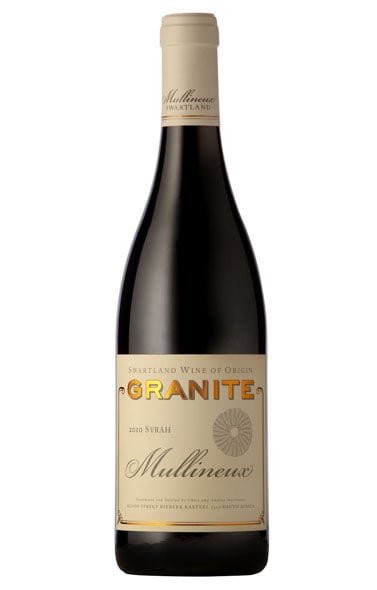Eben Sadie of Sadie Family Wines.
The 20 years since South Africa's first democratic elections have been momentous for the country's wine industry. Over the years, Cape wine has benefited hugely from a new international respectability – and a new curiosity. Marvellously, something not short of a revolution was to follow.
More than one international commentator now speaks of the South African wine industry as the most exciting in the world – or at least the southern hemisphere. It's a happy coincidence that the winery, which topped this poll of 29 local and international wine professionals, was built by a man who qualified as a winemaker in that significant year of 1994. What's more, among Eben Sadie's fellow graduates are two other winemakers featuring in this list of the top 20 South African wine producers – Marc Kent of Boekenhoutskloof and Chris Williams of Meerlust. This is a good year.
In 2001, the first of these polls were conducted. The dynamism of Cape wine means that it has been worth repeating the exercise frequently – the last wine list I created was two years ago, also first reported in the Mail & Guardian (April 2012).
As to the nature of that change, well, this poll is hardly a scientific exercise, admittedly, but as an indication of the standing of Cape wine producers in the marketplace, in critical opinion and in sheer buzz, it is revelatory. All sorts of statistics jump out – one of the most significant being that, of 2001's list, just seven wineries still feature in 2014.
Of 2001's Top Five category, which is always treated as a separate list, three of the producers no longer appear. Not even in the Top 20; they are Neil Ellis, Rustenberg and Veenwouden. Most of the wineries in this year's list did exist in 2001 – though some were very youthful – but Eben Sadie's first wine (Columella 2000) had not yet been released, and second-placed Mullineux was still seven years away from birth.

Change continues; the wine revolution progresses. There were four brand new entries this year – Cederberg, Delaire Graff, Badenhorst and Reynecke ?– and one re-entry – De Trafford, which was there in 2001 but later had not appeared on the list. The 29-strong panel voted for a total of 84 wineries, but only 46 of them got three or more votes.
The panel comprises of seven leading sommeliers, six retailers, 11 local and five foreign critics and journalists.
A particularly interesting aspect of the results is how geographically diverse quality is revealed as being. True, Stellenbosch got nine of the 20 slots, but that's in accordance with the region's size. Swartland, where there are a fraction of the number of wineries, got three (including the top-two spot), and Franschhoek and the Hemel-en-Aarde got two slots each. Constantia, Cape Point, Elgin and Cederberg are also represented.
A full list of the voters and further details of the results can be found on grape.co.za.
THE TOP FIVE
1. Sadie Family Wines. Eben Sadie, an emblematic figure of the Cape's wine revolution, has been making his red Columella and white Palladius blends since the early years of the century. Local and international acclaim brought fame to the whole Swartland area, initiating its great renaissance. Then came Sadie's widely-inspiring Old Vineyard Series, confirming his vision, insight and energy.
2. Mullineux Family Wines. Young Chris Mullineux and his American wife Andrea are based in the little town of Riebeek-Kasteel, buying grapes, especially Shiraz and Chenin Blanc, from Swartland vineyards. They soared onto the Top 20 list in 2012 at number 10, and this year made another record leap: they are just squeezed out of the top spot by their good friend and near-neighbour.

3. Kanonkop, in Stellenbosch, is the longest-established winery in the Top 5 – and the only winery to have been there every time since the first poll in 2001. No other producer in the list has such an impressive track record of great wines ?– especially the Paul Sauer blend, made since 1981, but also Pinotage and Cabernet Sauvignon.
4. Boekenhoutskloof was in the 2001 Top 20 category, but has grown in size and is renown under the continued direction of cellar master Marc Kent. Based at the organic home-farm in Franschhoek, it also draws grapes from far and near.
5. Chamonix started revealing the vinous potential of its Franschhoek mountainside soils after Gottfried Mocke arrived in 2001 to look after vineyards and cellars with his flair and insight. Chardonnay and Sauvignon Blanc have always done well here; now a handful of reds, especially Pinot Noir, join them amongst the country's best – and there's not a dud in sight.
THE REST OF TOP 20
6. Paul Cluver Estate makes mostly white wines off the extensive, pioneering Elgin domaine, but the Pinot Noir is equally fine.
7. Newton Johnson is one of this year's big climbers. This quintessential family farm in the Hemel-en-Aarde near Hermanus is most famous for its Chardonnay and Pinot Noir.
8. Cape Point Vineyards, lashed by cool sea-winds near Noordhoek on the Peninsula, has seen winemaker Duncan Savage establish an enviable reputation for its white wines.
9. Hamilton Russell Vineyards, pioneer of winemaking in the Hemel-en-Aarde Valley, is still famous for its Pinot Noir and Chardonnay – the latter widely regarded as the country's finest.
10. Vergelegen is one of Stellenbosch's great historic and contemporary showplaces, with André van Rensburg continuing to produce a range of red and white wines to match.
11. Tokara, high on the Helshoogte Pass just outside Stellenbosch, makes superb, elegant wines from there (as well as Agulhas and Elgin) under Miles Mossop's deft direction.
12. Thelema is Tokara's neighbour but longer established (since 1983), with cellar master Gyles Webb amongst the pioneers of modern winemaking in the Cape.
13. Jordan has a large range of wines (modest to grand) from its sizeable Stellenbosch estate, run in masterly style by husband-and-wife winemaking team Gary and Kathy Jordan.
14. Cederberg is the highest new entry, as its mountainous vineyards are among the Cape's loftiest, though David Nieuwoudt also makes a fine range from vineyards near Cape Agulhas.
15. Delaire Graff – third and oldest of the Helshoogte wineries in the region – arrives to trumpet its reinvigoration since its purchase a decade back by British diamantaire Laurence Graff.
16. AA Badenhorst Family becomes the third Swartland winery in the Top 20, marking the great success of Adi Badenhorst's mighty labours on the run-down farm the family acquired in 2006.
17. Klein Constantia represents the Constantia Valley here, as well as the prestige particularly (though not solely) of its famous, historically relevant sweet wine, Vin de Constance.
18. Meerlust is one of Stellenbosch's great old estates, owned by the Myburghs since 1757, it's fine winemaking tradition re-energised for the past decade by winemaker Chris Williams.
19. Reyneke, one of few biodynamic wineries in the Cape, has its organic Stellenbosch vineyards cared for by "vine-hugger" Johan Reyneke, and its elegant wines crafted by the brilliant Rudiger Gretschel.
20. De Trafford returns after a brief absence, with David Trafford's big, ripe but well-balanced Stellenbosch wines as commanding as ever.
JUDGING PANEL
Sommeliers
Hansi Joakim Blackadder
Gareth Ferreira
Neil Grant
Higgo Jacobs
James Pietersen
Joerg Pfuetzner
Francois Rautenbach
Retailers
Carrie Adams
Carolyn Barton
Mark Norrish
Roland Peens
Caroline Rillema
Local writers and critics
Michael Crossley
Christian Eedes
Michael Fridjhon
Edo Heyns
Tim James
Angela Lloyd
Melvyn Minnaar
Cathy Marston
Maggie Mostert
Ingrid Motteux
Christine Rudman
Cathy van Zyl
International writers and critics
Tim Atkin
Tom Cannavan
Jamie Goode
Neal Martin
Anthony Rose